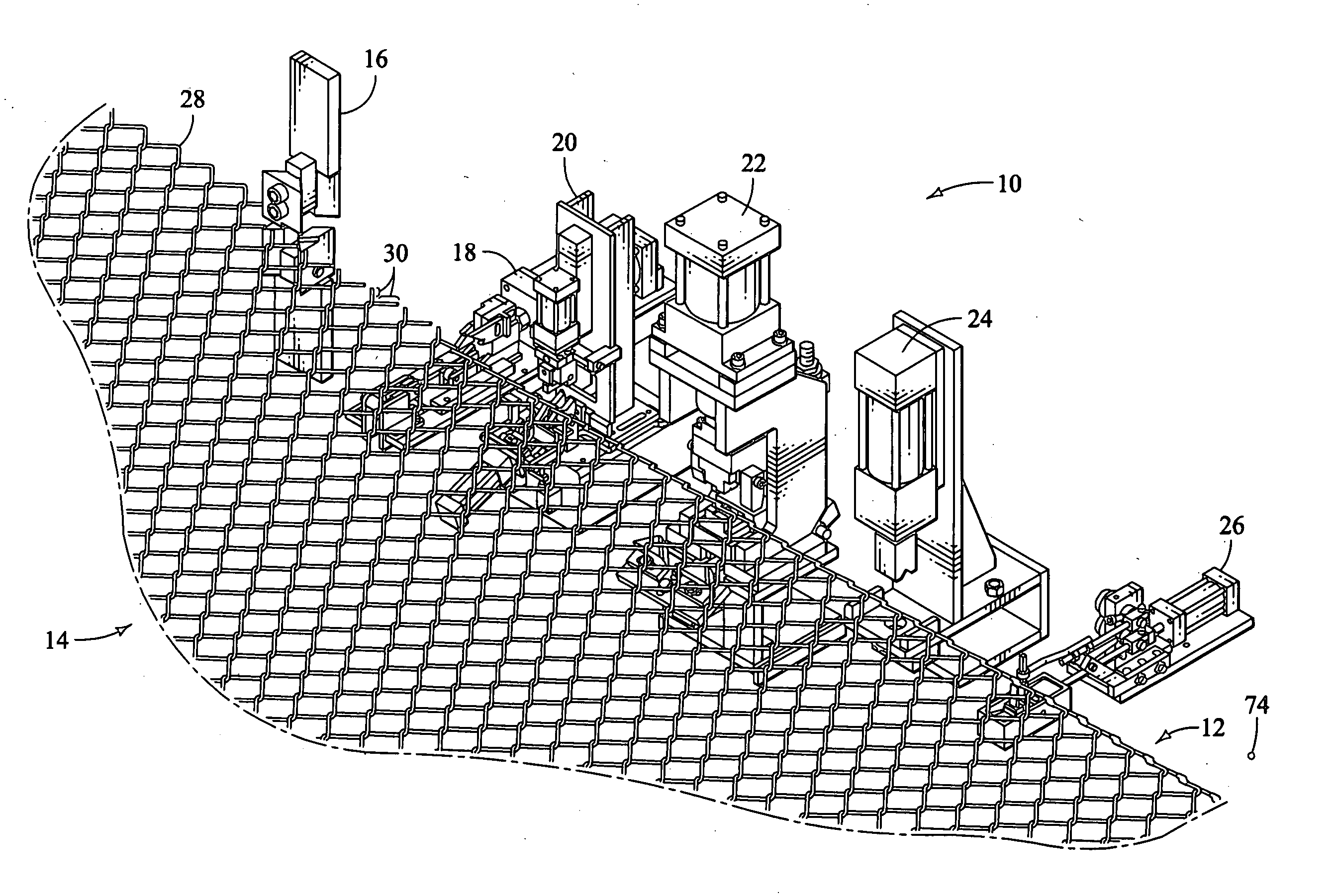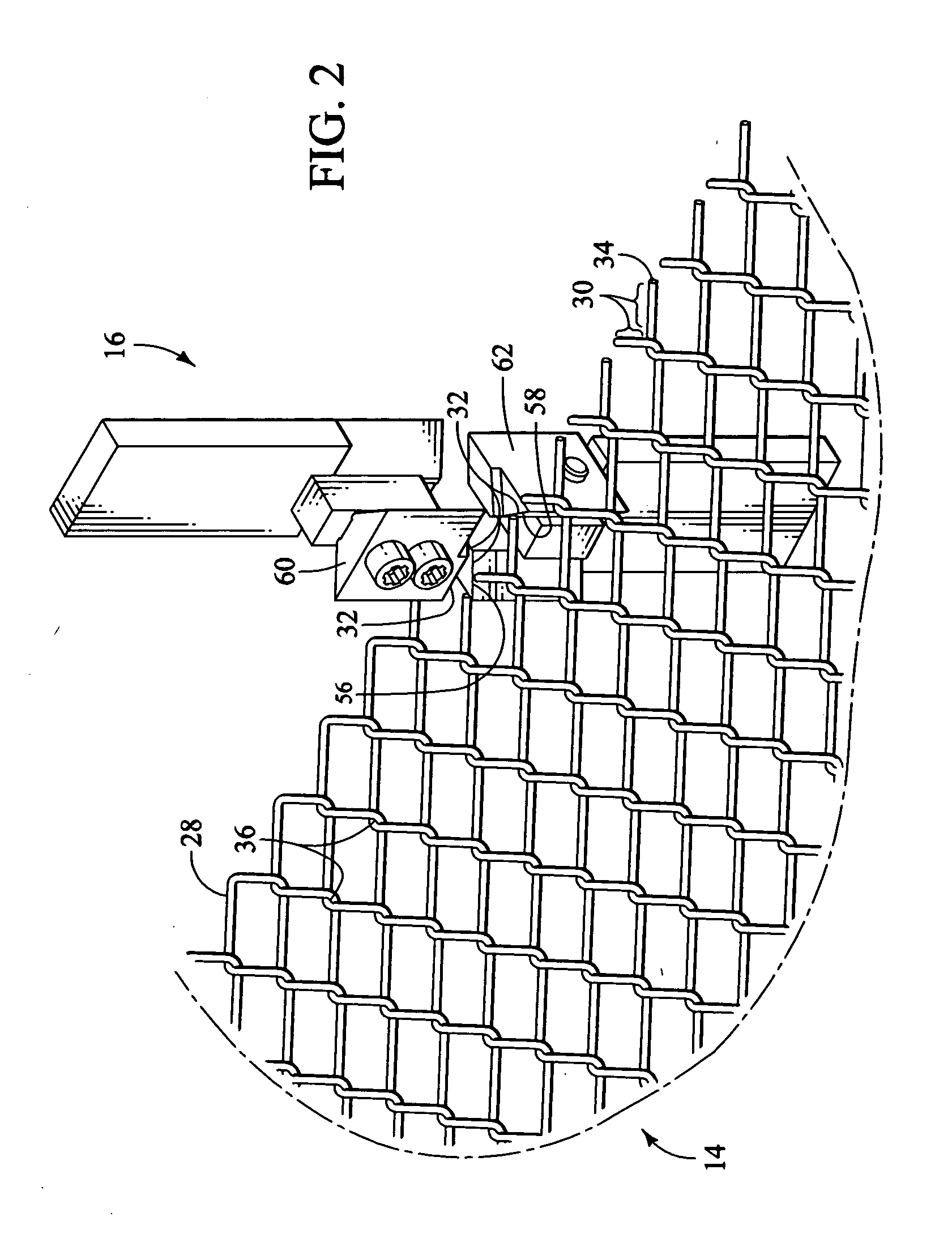Apparatus and method for making an improved chain link fabric
a chain link fabric and flattening technology, applied in the field of chain link fabrics, can solve the problems of easy crushing or bending of the ends, the damage may be so severe, and the weak knuckled or barbed ends are easily crushed or bent out of place, so as to reduce the total cost of the fabric and the time required for installation and repair, and the effect of enduring large amounts of for
- Summary
- Abstract
- Description
- Claims
- Application Information
AI Technical Summary
Benefits of technology
Problems solved by technology
Method used
Image
Examples
Embodiment Construction
[0048] The present invention provides for an improved chain link fabric having flattened end portions and a method and apparatus for making the flattened end portions. The method and apparatus for making flattened end portions and the chain link fabric itself, described herein, provide a number of significant advantages. By way of example only, some of the advantages of the present invention include, extending the useful life of the fabric and reducing the need to replace or repair the fabric; providing an aesthetically pleasing, taut fabric with flattened end portions that are strong enough to resist a large force without becoming bent or crushed; preventing serious injury to installers and those who come into contact with the chain link fabric by providing a fabric without sharp or protruding edges; providing a fabric that does not tangle and can be quickly and safely prepared for shipping and installation; and reducing the expense and repair associated with traditional chain link...
PUM
| Property | Measurement | Unit |
|---|---|---|
| Force | aaaaa | aaaaa |
| Shape | aaaaa | aaaaa |
| Compressibility | aaaaa | aaaaa |
Abstract
Description
Claims
Application Information
 Login to View More
Login to View More - R&D
- Intellectual Property
- Life Sciences
- Materials
- Tech Scout
- Unparalleled Data Quality
- Higher Quality Content
- 60% Fewer Hallucinations
Browse by: Latest US Patents, China's latest patents, Technical Efficacy Thesaurus, Application Domain, Technology Topic, Popular Technical Reports.
© 2025 PatSnap. All rights reserved.Legal|Privacy policy|Modern Slavery Act Transparency Statement|Sitemap|About US| Contact US: help@patsnap.com



